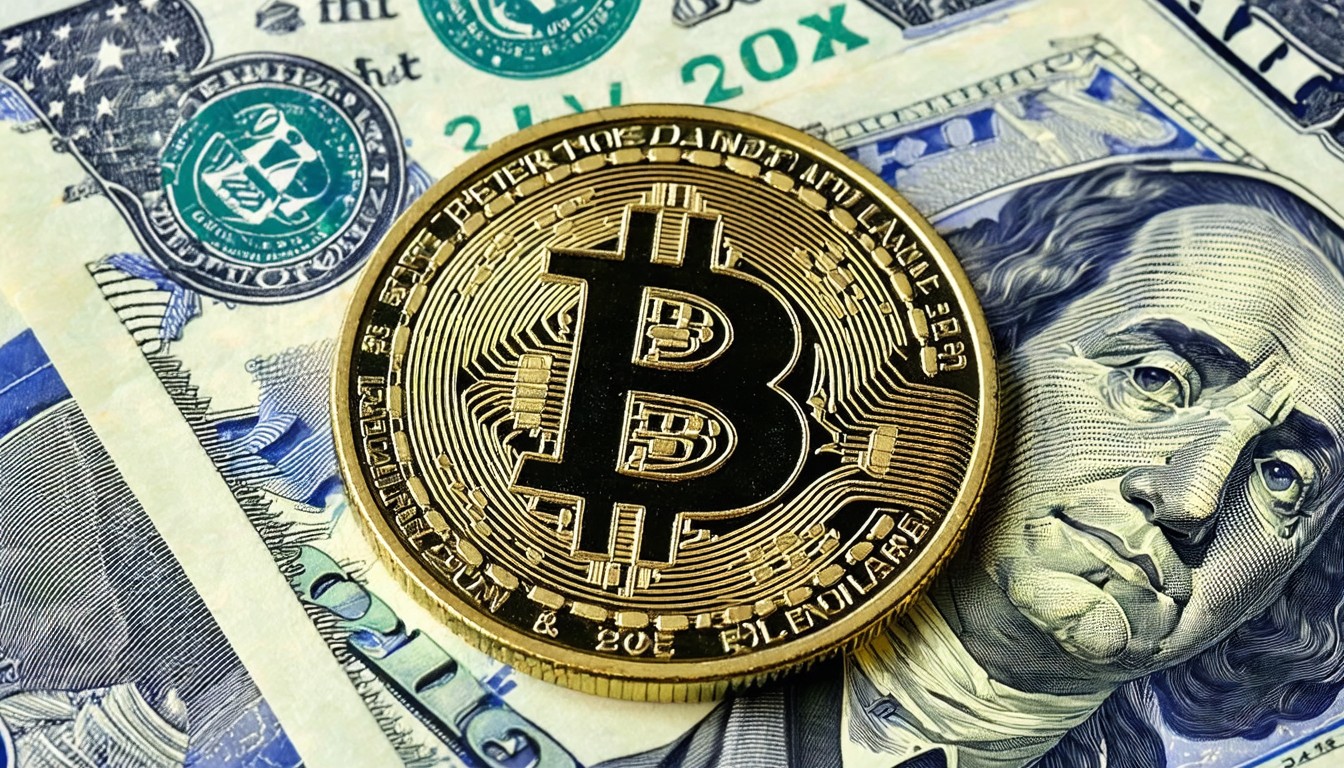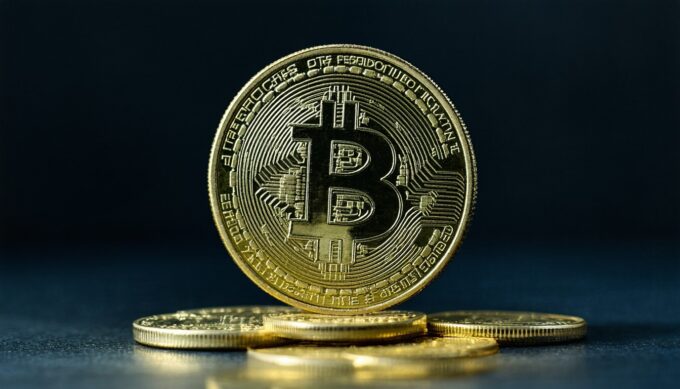Bitcoin’s price in dollars—the BTC to USD exchange rate—remains at the heart of global cryptocurrency markets and day-to-day financial headlines. Since its inception, Bitcoin has evolved from a digital experiment into a trillion-dollar asset class, with its value in US dollars acting as a bellwether for broader investor sentiment. From all-time highs to volatile swings, the BTC price in USD not only reflects core market dynamics but also embodies deeper narratives around adoption, regulation, and financial innovation.
For both seasoned traders and everyday observers, understanding the drivers behind the Bitcoin price dollar rate, its real-time movements, and market trends is crucial. Behind the flashing tickers and charts, profound factors shape the BTC/USD record, including macroeconomic events, institutional moves, and blockchain-specific developments.
Key Factors Influencing the Bitcoin to Dollar Price
Multiple interlocking forces affect Bitcoin’s price in USD. Though daily volatility is a hallmark, the rationale behind major swings often lies deeper in market fundamentals and global economics.
Macroeconomic Trends and Inflation
Global inflation rates and monetary policy have a significant influence on the BTC/USD pair. During periods of high inflation or central bank stimulus, many investors turn to Bitcoin as a potential hedge. This “digital gold” narrative gained traction particularly during the 2020-2021 era, when central banks injected unprecedented liquidity into financial markets.
“When investors perceive a weakening dollar or rising inflation, Bitcoin often attracts inflows as a speculative store of value, amplifying its price moves,” observes Kelly Greer, a digital asset strategist.
However, Bitcoin’s actual effectiveness as an inflation hedge is still debated among economists. While the asset occasionally moves in tandem with inflation expectations, it’s also prone to risk-on cycles and speculative frenzies.
Regulatory Signals and Institutional Adoption
News from regulators—whether looming bans or green lights—can trigger sharp Bitcoin price dollar moves. For example, the approval of spot Bitcoin ETFs in the United States in early 2024 catalyzed significant buying activity, increasing mainstream investor access. By contrast, outright bans or uncertainty, as seen in certain countries, often depress short-term prices.
On a positive note, the entrance of institutional investors—hedge funds, public companies, and family offices—has brought higher liquidity and legitimacy. Notable names like Tesla, MicroStrategy, and major Wall Street firms now actively trade or hold Bitcoin, further intertwining the asset with global financial flows.
Network Fundamentals: Halving and Hashrate
Internally, Bitcoin’s own blockchain dynamics can drive value. The “halving” event, occurring every four years, reduces the reward miners receive for processing transactions. This event, by design, limits new Bitcoin supply—and historically, past halving cycles have preceded significant upward repricing.
Network security, measured by Bitcoin’s hashrate (the total computational power securing its network), also reflects confidence and stability. Sustained growth in hashrate often signals robust miner participation and healthy ecosystem security, reinforcing price stability over the long term.
Live BTC/USD Exchange Rate: How Prices Are Set
The Role of Exchanges and Spot Markets
Unlike traditional equities, Bitcoin trades 24/7 on hundreds of global exchanges. Prices are established through real-time order books, with the last executed trade setting the prevailing BTC/USD rate. Liquidity differs from platform to platform, but major exchanges like Coinbase, Binance, and Kraken set benchmarks that financial media and aggregators (e.g., CoinMarketCap) track closely.
Beyond spot markets, derivatives such as futures and options also impact the underlying spot price. When open interest on Bitcoin futures spikes, it can foreshadow outsized volatility in the spot market.
Cross-Exchange Arbitrage and Price Discovery
The decentralized nature of crypto trading means small price discrepancies may occur between exchanges. High-frequency traders and institutional desks often engage in arbitrage—simultaneously buying on one platform and selling on another—to exploit these gaps. This activity, in turn, helps rationalize and synchronize the live BTC price in dollars across the global market.
Major Market Trends Impacting BTC/USD Dynamics
The Rise of ETFs and Public Investment Vehicles
A watershed moment for BTC/USD arrived with the launch of spot Bitcoin ETFs in major financial markets. These investment vehicles allow regular investors to gain price exposure without directly managing digital wallets. Since the first approvals, ETFs have attracted billions in inflows, making Bitcoin more accessible and further aligning its price with conventional market cycles.
Shifting Narratives: From Speculation to Store of Value
While early adoption was driven by speculation, recent years witnessed a broad shift. Bitcoin is increasingly seen as a portfolio diversifier, especially amid macroeconomic uncertainty. Institutional-grade custody solutions and tighter regulations have helped bolster trust.
However, volatility remains intrinsic. Even with institutional backing, double-digit swings in the BTC/USD price are common when global risk sentiment changes suddenly.
Geopolitical Events and Dollar Strength
Given that Bitcoin is often priced in US dollars globally, major shifts in the dollar index (DXY) can create ripple effects. When the DXY strengthens, BTC/USD may face pressure as global investors recalibrate exposure. Conversely, a falling dollar can support Bitcoin’s narrative as “digital gold,” prompting capital inflows.
Geopolitical crises—ranging from conflict to currency controls—also drive demand from those seeking alternatives to local banking or fiat volatility. Notably, Bitcoin trading volumes have at times spiked in countries experiencing economic turmoil or restricted access to traditional markets.
Practical Example: The 2023–2024 Bull and Correction Cycles
Recent years provide vivid examples of the BTC/USD market in action. Throughout 2023, Bitcoin began staging a strong recovery, buoyed by diminishing inflation fears and anticipation of regulatory breakthroughs. The rally accelerated following US spot ETF approvals, only to enter a sharp but temporary correction on profit-taking and renewed Fed tightening.
During these cycles, the BTC price dollar rate often overshot in both directions. Still, underlying adoption and increased public participation suggested deeper structural growth beyond mere speculation.
Monitoring the Bitcoin Price Dollar: Tools and Best Practices
Given the round-the-clock nature of crypto markets, investors and observers rely on a range of platforms to monitor the BTC/USD exchange rate:
- Aggregators: CoinMarketCap, CoinGecko, and Messari provide near-instantaneous consolidated price data.
- Exchange apps: Major trading platforms update prices in real time and often offer advanced charting for analysis.
- Financial news outlets: Reuters, Bloomberg, and The Wall Street Journal increasingly feature Bitcoin tickers and news analysis.
Prudent investors monitor not just the price but also on-chain fundamentals, liquidity, futures open interest, and social sentiment for a holistic view of the BTC/USD environment.
Conclusion: Navigating the Volatile BTC/USD Landscape
The Bitcoin price dollar rate is more than just a number—it encapsulates the world’s shifting attitudes toward digital assets, technological disruption, and macroeconomic risk. From 24/7 trading to dramatic rallies and corrections, BTC’s value in USD reflects a blend of financial engineering, social consensus, and real-time global demand.
While volatility remains part of the journey, the enduring trend suggests that Bitcoin’s dollar price will continue to serve as a key indicator for both the crypto sector and the evolving digital economy. For investors, traders, and casual followers alike, understanding the interplay of factors behind BTC/USD empowers more informed, resilient market participation.

FAQs
What determines the live BTC to USD exchange rate?
The live BTC/USD rate is set by the most recent trades on major cryptocurrency exchanges. It continuously updates based on buying and selling activity across various platforms, influenced by supply, demand, and broader market movements.
Why does Bitcoin’s price in dollars fluctuate so much?
Bitcoin’s high volatility results from a combination of limited supply, speculative trading, market news, regulatory developments, and broader investor sentiment. Its 24/7 trading environment also allows for rapid shifts in price.
How do major events like ETF approvals impact the BTC/USD rate?
News such as ETF approvals can increase investor confidence and attract substantial new capital, often resulting in sharp upward moves. However, these events can also lead to increased volatility as expectations shift quickly.
Can the US dollar’s strength or weakness affect Bitcoin prices?
Yes. When the US dollar strengthens, Bitcoin may become relatively more expensive for international buyers, potentially dampening demand. Conversely, a weaker dollar can support higher BTC prices as investors seek alternatives.
Where can I check the most reliable Bitcoin price dollar data?
Trusted sources include global exchanges like Coinbase and Binance, as well as price aggregators such as CoinMarketCap and CoinGecko. Major financial news outlets also increasingly feature up-to-date BTC/USD information.
Is Bitcoin a safe investment given its price swings?
Bitcoin is considered a high-risk, high-reward asset. While it offers potential for considerable returns, its price can swing dramatically in short periods, making it important for investors to carefully assess their risk tolerance and diversify accordingly.








Leave a comment